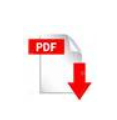|
Dry sliding wear behavior of additively manufactured CoCrWNixAly alloys
Xudong Yang a , Chuanwei Li a,* , Miao Zhang b , Zhenhua Ye a , Xinyu Zhang a , Mengyao Zheng a , Jianfeng Gu a,**, Jianjun Li c , Sijia Li d
a Institute of Materials Modification and Modeling, School of Materials Science and Engineering, Shanghai Jiao Tong University, Shanghai, 200240, China
b Department of Photoelectric Detection and Guidance System, Shanghai Aerospace Control Technology Institute, Shanghai, 201108, China
c IKD Co.,Ltd, Ningbo, 315000, China
d Openlaser Labs, Huzhou RayOpen Research Institute, Huzhou, 313000
Abstract
Stellite alloys are widely utilized in aerospace and automotive applications due to their excellent wear resistance which is strongly dependent on the mechanical mixture layer (MML). However, the formation of MML under light load or low temperature is significantly restricted, leading to poor tribological performance. This study reported the tribomechanical evaluations of different CoCrWAlNixAly alloys obtained by direct laser deposition, with specific attention to the impact of aluminum and nickel content on the structure-property relationship. The wear performance was evaluated by a ball-on-disc test and microstructural features of worn surface and sub�surface were characterized by SEM, XPS and TEM. Results indicated that both aluminum and nickel facilitate the formation of MML consisting of nano-oxides, whereas the resultant wear resistance varies. The MML formed by the aluminum addition was beneficial for lubrication and wear resistance where the reduction of both mass and volume loss by 50% was determined. In comparison, the MML formed by the nickel addition at a higher temperature was easy to peel off, indicating less efficient protection. Finally, an improved wear model for the cobalt-based alloy was proposed to reveal the characteristics of MML based on the analysis of the theoretical stress field.

|